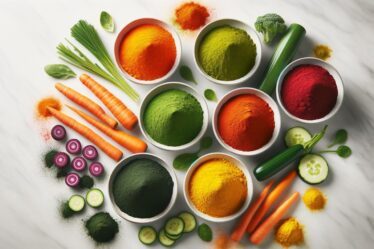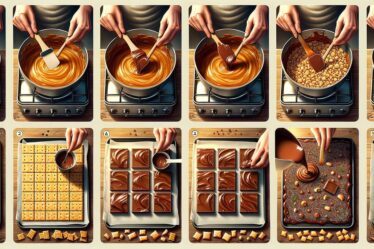
Coca-Cola’s history began in 1886 when pharmacist John Pemberton created a syrup he believed had medicinal properties. When mixed with carbonated water, it was marketed as a patent medicine. Pemberton’s bookkeeper, Frank Robinson, named the product “Coca Cola” and designed the iconic script logo still used today.
By 1894, Coca-Cola syrup was sold in every U.S. state. In 1895, it expanded to Canada and Mexico.
At the turn of the century, Coca-Cola had become an international brand with bottling plants in Europe, Asia, and South America. Throughout the 20th century, the company’s success grew through advertising campaigns and marketing strategies. Today, Coca-Cola is one of the world’s most recognized and valuable brands, available in over 200 countries.
Its product line has expanded beyond the original soda formula. The company’s growth from a patent medicine to a global icon demonstrates its enduring appeal and adaptability. Coca-Cola’s success is attributed to its innovation and ability to connect with consumers across cultures and generations.
One of the most intriguing aspects of Coca Cola’s history is the closely guarded secret of its famous formula. The original recipe for Coca Cola was created by John Pemberton in 1886 and was kept under lock and key by the company for over a century. The formula is said to contain a blend of oils, spices, and other natural ingredients that give Coca Cola its distinctive flavor.
To this day, only a handful of people are privy to the exact recipe, and it is stored in a secure vault at the World of Coca Cola museum in Atlanta, Georgia. Over the years, there have been numerous rumors and speculations about the secret formula, with some claiming that only two executives at Coca Cola know the complete recipe at any given time. The company has gone to great lengths to protect its intellectual property, including creating a fake recipe that was leaked to the public in 2011 as a diversion tactic.
Despite these efforts, the true recipe for Coca Cola remains one of the most closely guarded secrets in the business world. The mystery surrounding the Coca Cola formula has only added to the allure of the brand and has become an integral part of its marketing and storytelling. The company’s ability to maintain the secrecy of its recipe for over a century is a testament to its commitment to quality and consistency.
As Coca Cola continues to innovate and expand its product line, the secret formula remains a symbol of the brand’s enduring legacy and its place in popular culture around the world.
While classic Coca Cola may be the most well-known variation of the iconic soda, there are countless regional variations and limited-edition flavors that cater to different tastes and preferences around the world. From Cherry Coke in the United States to Green Tea Coke in Japan, Coca Cola has created a wide range of flavors to appeal to diverse consumer palates. In some countries, you can find unique variations such as Coca Cola with added lime or vanilla, while others offer seasonal flavors like cinnamon or gingerbread during the holidays.
In addition to these regional variations, Coca Cola has also released limited-edition flavors that are only available for a short period of time. These special releases often generate excitement and anticipation among consumers, who are eager to try something new and unique. Some of these limited-edition flavors have become cult favorites, with fans clamoring to get their hands on rare bottles or cans from around the world.
The diverse range of flavors offered by Coca Cola reflects the brand’s commitment to innovation and its understanding of local tastes and preferences. By creating regional variations and limited-edition flavors, Coca Cola is able to connect with consumers on a more personal level and offer them something special that they can’t find anywhere else. As the brand continues to expand its global presence, we can expect to see even more exciting variations and flavors that cater to different markets and consumer demographics.
Coca Cola has long been associated with classic American fare such as burgers, fries, and hot dogs, but its versatility as a beverage makes it an ideal pairing for a wide range of foods. The sweet and fizzy nature of Coca Cola can complement savory dishes like barbecue ribs or spicy chicken wings, while its refreshing qualities make it an excellent accompaniment to rich and indulgent desserts like chocolate cake or ice cream sundaes. In recent years, food enthusiasts have also experimented with using Coca Cola as an ingredient in marinades, glazes, and sauces for meats and vegetables, adding a unique depth of flavor to their dishes.
In addition to traditional pairings, there are also unexpected and delicious combinations that showcase Coca Cola’s versatility as a beverage. For example, some chefs have created recipes for Coca Cola-infused cocktails or mocktails that highlight its sweet and tangy flavor profile. Others have used Coca Cola as an ingredient in savory dishes such as braised pork or glazed ham, where its caramel notes add complexity and depth to the final dish.
Whether enjoyed on its own or paired with food, Coca Cola’s wide appeal and versatility make it a popular choice for consumers around the world. As Coca Cola continues to innovate and expand its product line, we can expect to see even more creative pairings and food collaborations that showcase its unique flavor profile. Whether enjoyed with classic comfort foods or unexpected culinary creations, Coca Cola’s ability to enhance and complement a wide range of dishes makes it a timeless favorite for consumers of all ages.
The irresistible taste of Coca Cola can be attributed to a complex blend of flavors that work together to create a unique sensory experience. The key components of Coca Cola’s flavor profile include sweetness from sugar or high fructose corn syrup, acidity from phosphoric acid, citrus notes from natural flavors like lemon or lime, and subtle hints of spices such as cinnamon or nutmeg. These ingredients are carefully balanced to create a harmonious blend that is both refreshing and satisfying.
In addition to its flavor components, Coca Cola’s carbonation plays a crucial role in enhancing its taste experience. The effervescence of carbonation creates tiny bubbles that burst on the tongue, releasing aromas and intensifying the perception of flavor. This fizzy sensation adds an extra layer of complexity to Coca Cola’s taste profile, making it more enjoyable and refreshing to drink.
The science behind Coca Cola’s flavor profile is a testament to the brand’s commitment to quality and consistency. By carefully selecting and blending ingredients, as well as controlling factors such as carbonation levels and sweetness levels, Coca Cola has been able to create a product that appeals to consumers across different cultures and generations. As consumer preferences continue to evolve, we can expect Coca Cola to continue innovating and refining its flavor profile to meet changing tastes and expectations.
Coca Cola has had a profound impact on popular culture since its inception, with memorable advertising campaigns that have become part of our collective consciousness. From iconic slogans like “It’s the Real Thing” to heartwarming commercials featuring polar bears and Santa Claus, Coca Cola’s marketing efforts have resonated with consumers around the world. The brand’s ability to evoke emotions and create lasting memories through its advertising has solidified its place in popular culture and made it an enduring symbol of happiness and optimism.
In addition to advertising, Coca Cola has also made appearances in movies, television shows, and music videos, further cementing its status as a cultural icon. Whether featured as a prop in a classic film or mentioned in a hit song, Coca Cola’s presence in popular media has helped it reach new audiences and connect with consumers on a deeper level. Its association with moments of joy, celebration, and togetherness has made it a beloved brand that transcends borders and generations.
As Coca Cola continues to evolve and adapt to changing consumer behaviors, we can expect it to maintain its prominent role in popular culture through innovative marketing initiatives and strategic partnerships with influencers and content creators. By staying relevant and engaging with consumers through various media channels, Coca Cola will continue to be an integral part of our cultural landscape for years to come.
As consumer preferences continue to evolve, Coca Cola is committed to staying ahead of trends and meeting changing demands through innovative new flavors and product offerings. In recent years, the company has introduced new variations such as Coca Cola Zero Sugar and flavored options like Cherry Coke Zero Sugar, catering to health-conscious consumers who are looking for lower-calorie alternatives without sacrificing taste. Additionally, Coca Cola has expanded its portfolio with non-carbonated beverages such as bottled water, teas, and sports drinks to appeal to a wider range of consumer preferences.
In addition to product innovation, Coca Cola is also focused on sustainability initiatives that aim to reduce its environmental impact and promote responsible consumption. The company has made significant investments in sustainable packaging solutions such as plant-based bottles and recyclable materials, as well as initiatives to minimize water usage and carbon emissions across its operations. By prioritizing sustainability and corporate responsibility, Coca Cola is positioning itself as a leader in environmental stewardship while meeting consumer expectations for ethical business practices.
Looking ahead, we can expect Coca Cola to continue exploring new flavors, formats, and packaging innovations that align with changing consumer preferences while maintaining its commitment to quality and consistency. By staying true to its heritage while embracing innovation, Coca Cola will remain a beloved brand that resonates with consumers around the world for generations to come.
If you’re a fan of flavored Coca Cola, you might be interested in learning about the unique and exotic flavors of cactus pear and Janda Pulang. Check out this article to unearth the mystery of the cactus pear and discover an unforgettable drinking experience with Janda Pulang. These intriguing flavors could inspire new and exciting variations of your favorite soda.
FAQs
What is flavoured Coca Cola?
Flavoured Coca Cola refers to Coca Cola beverages that have been infused with additional flavors, such as cherry, vanilla, lime, or orange, to create a different taste experience from the original Coca Cola formula.
Are flavoured Coca Cola products available worldwide?
Flavoured Coca Cola products are available in various markets around the world, but the availability of specific flavors may vary by region.
What are some popular flavours of Coca Cola?
Some popular flavours of Coca Cola include Cherry Coke, Vanilla Coke, Lime Coke, and Orange Vanilla Coke.
Are flavoured Coca Cola products as popular as the original Coca Cola?
The popularity of flavoured Coca Cola products varies by market and consumer preferences. While the original Coca Cola remains a classic favorite, flavoured varieties have gained a dedicated following among consumers.
Do flavoured Coca Cola products contain the same ingredients as the original Coca Cola?
Flavoured Coca Cola products generally contain the same base ingredients as the original Coca Cola, with the addition of natural or artificial flavorings to create the desired taste profile.



